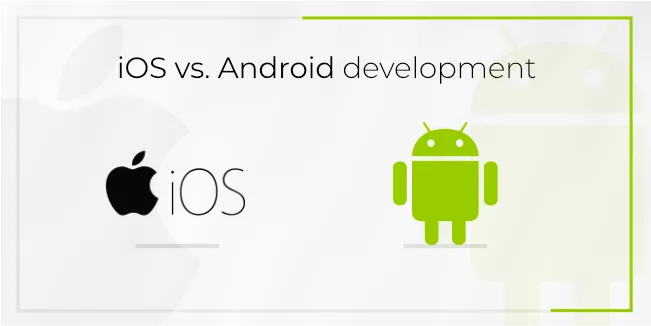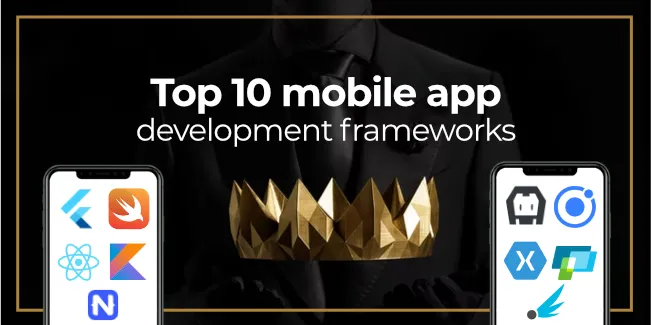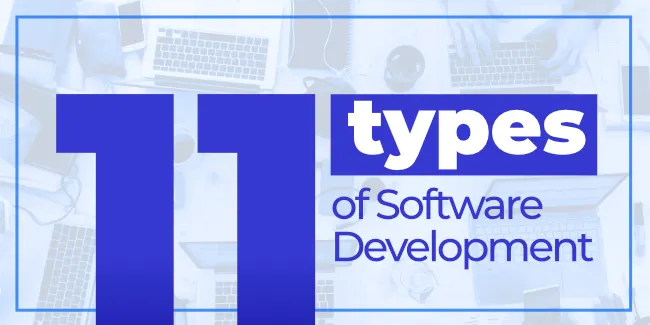It’s one of the first questions you must answer when developing an app. While your ultimate objective may be to launch on both platforms at some point, doing so might be costly and risky unless you want to build an iOS and Android app simultaneously by taking advantage of cross-platform development. It is worth remembering that at the moment, there are over 7 million mobile apps on the Google Play Store and Apple App store! Therefore, the platform you choose first may be your to-be or not to be on the market.
In this article, we will show you exactly how the development for these two platforms differ, their advantages and disadvantages, and how you can create an application for Android and iOS without becoming bankrupt.
Let’s get started!
Key differences between iOS app development and Android app development
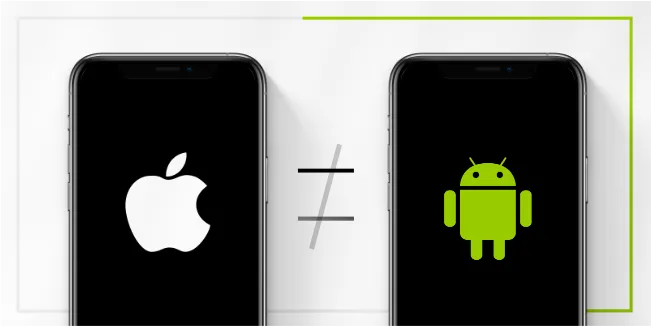
Android and iOS are operating systems produced by two large corporations – Google and Apple. They have been competing in the market for many years and have both their supporters and opponents. The differences between these systems are visible at first glance, but what does it look like from the software development side? We will answer this question at this point.
Programming languages
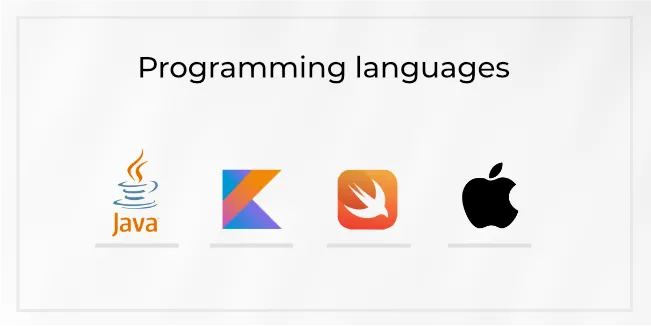
The most important thing for a software engineer is the programming language. After all, this is what he or she deals with every day. Android native app development uses Java or Kotlin, while iOS app development uses Objective-C or Swift. Let’s take a closer look at these languages.
Java
Java is a versatile and powerful language that has been around for over 20 years. It is one of the most popular programming languages in the world and is used in many different fields, from desktop applications to web services. Java is also the official language for Android app development, so it is no surprise that it is widely used among Android developers.
Kotlin
Kotlin is a newer language that was developed by JetBrains, the company behind the popular IntelliJ IDEA Java IDE. Kotlin was designed to be an improved version of Java, with more features and better syntax. Kotlin is fully compatible with Java and can be used instead of Java for Android app development. Many Android developers are already using Kotlin for their projects.
Swift
In some aspects, Swift is similar to Objective-C. However, it differs in a few significant ways as well. For example, because Swift is a type-safe language, developers can’t make certain types of mistakes when writing code. This makes Swift more dependable and user-friendly than Objective-C. Even if you’re not familiar with programming, Swift is intended to be simple to read and comprehend. It’s also less error-prone since it doesn’t contain as many rules as Objective-C does.
Objective-C
The Objective-C was intended to link Smalltalk-style messaging to the C programming language. In Objective C, each component of object-oriented code has its own set of methods (or messages) that it can respond to. This made it extremely adaptable and effective but also rather complex — which is why it took so long for Objective C to become popular. Learn more about iOS programming languages with our article “BEST PROGRAMMING LANGUAGES FOR IOS APP DEVELOPMENT.”
Programming languages summary
Swift and Objective-C are assumed to be easier to learn and master. Therefore, you will likely find more experienced developers if you want to create an iOS app. However, you have to remember that even though Java and Kotlin are more complicated, they have a very strong community that would be able to support your project.
Complexity
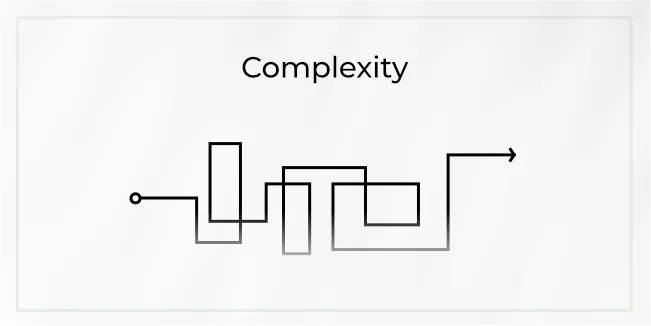
iOS apps have to work only on a few models of phones or tablets, while Android apps have to adapt to thousands of devices. This means that it is much harder to produce a high-quality Android app, which generally requires more time and effort.
This is because an android app has to adapt to many resolutions, screen diagonals, or even operating system versions. In the case of iOS apps, there are only a few predefined resolutions or screen sizes, and in addition, Apple forces users to have the latest version of the operating system.
Android app development is, therefore, much more complicated and requires a lot more time from android app developers because they have to test if the applications will work properly on all devices!
IDE (Integrated Development Environment)

IOS and Android have their Integrated Development Environments that allow you to compile code and build applications. iOS in this aspect is based on XCode, which has good source and assistant editors.
On the other hand, Android uses Android Studio, which has a Gradle-based build system that allows developers to produce many app versions for various android devices more quickly. Both XCode and Android Studio are great solutions that Apple and Google officially approve.
Therefore, it’s hard to say which IDE is better. It all depends on the developer’s preferences.
Design guidelines

Both Android and iOS development must be done according to the guidelines of a given platform.
Apple has very strict guidelines when it comes to iOS apps. All software components, features, and designs must meet Apple’s standards and requirements. The same goes for the Google Play Store, which requires that Android apps follow specific design guidelines set by Google.
Android guidelines are called Material Design, while the iOS developer handbook will be the Human Interface Guidelines. Android apps are rather more colorful and complex, while iOS mobile apps use blank space and shadows.
Revenue

Apple’s App Store generates more revenue than the Google Play Store, even though the latter has more active users. The Google Play Store has more than 1 billion active users, while the App Store has around 500 million. However, this doesn’t mean that the App Store is less popular – iOS users tend to be more loyal to their platform and are less likely to switch to Android.
Additionally, iOS users tend to be wealthier and are more willing to spend money on apps and in-app purchases. Android is mostly used by people in developing countries, who are less likely to have access to credit cards or other forms of payment.
Cost

The cost of developing an iOS app is generally lower than the cost of developing an Android app. This is because there are fewer devices to support, and the development process is less complex.
Regarding the hourly developer rate, both iOS and Android developers in the US charge around $ 150, while in Europe, the rates will vary between $ 25- $ 200.
iOS advantages over Android
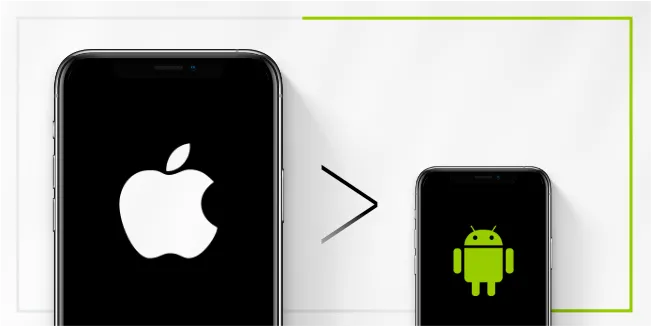
Cheaper & simpler development
As we said earlier, iOS mobile app development tends to be less costly than Android one. The main reason behind this is the number of devices an iOS developer has to consider. There are only a few models of iPhones and iPads, so it’s much easier to design and build an app that works well on all of them. Easier development process = less working hours = less money!
Additionally, the process of creating an iOS app is generally simpler and more straightforward than that of Android. This is because Android apps have to be designed for various devices with different screen sizes and resolutions. Learn how much time it takes to develop an app!
App store approval process
The approval process for apps in the Apple App Store is stricter than that of the Google Play Store. This means that your app is less likely to be rejected if it meets all the guidelines.
Monetization
Although many more devices work on the Android system than those from Apple, it is with iOS devices that you have a much greater chance to monetize the application. It’s also because Apple users are more attached to their devices, and research shows that they also have higher earnings. It all translates into the fact that if you want your app to be paid or include in-app purchases, the Apple platform can be a better choice than Android.
Security
iPhones and iPads have a good reputation for being more secure than Android devices. This is because Android is an open platform with many manufacturers, which makes it more difficult to maintain security across all devices.
iOS disadvantages
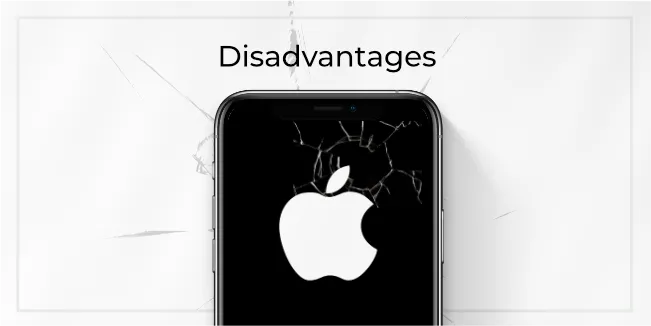
Customization
Apple is very strict when it comes to its interface guidelines. Thanks to that, all apps look great and elegant, but the drawback of this strict approach is that applications just look and feel very similar. Google gives developers much more freedom when it comes to that, so apps developed for Android can really stand out.
Entry-point
iOS app development necessitates the usage of Xcode, which is only available on Macs. The initial investment will be significantly greater if you don’t already own an Apple computer. Android development is far cheaper initially because Android Studio is available on all major desktop operating systems.
Android advantages over iOS
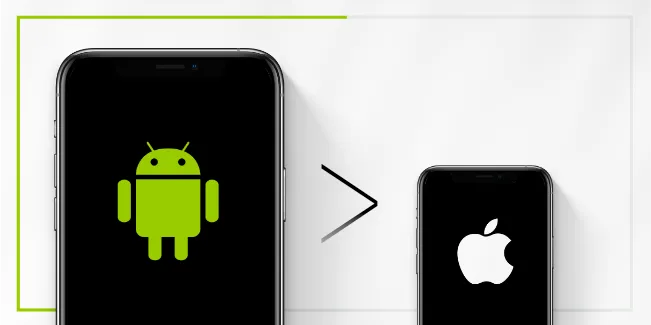
Customization
The Android operating system provides more freedom and customization options than the iOS system. In this situation, seasoned developers might truly unleash their creativity. However, giving developers limitless creativity isn’t always a good idea, especially if your project has pressing deadlines. More choices also imply more time spent ideating and risking something going wrong.
Updates
Google Play Store apps update automatically, while updates for iOS need to be installed manually. This can be advantageous if you want more control over your app’s updates. However, it also means that users might not have the latest version of your app, which can lead to issues if your app relies on the latest features.
Releasing of apps
When it comes to publishing applications, both platforms follow a similar procedure. On Google Play, however, creating apps is considerably easier and faster than on the iOS App Store. Your app will be live a couple of hours after you’ve uploaded the APK file to Google Play (APK).
Wider audience
There are a number of factors that contribute to the Android platform having a larger reach than iOS. Firstly, Android is available on a wider range of devices. There are hundreds of different Android devices on the market from a variety of manufacturers. This gives Android users more choice when it comes to picking a device that suits their needs.
Secondly, Android is much more popular in countries with lower purchasing power. This is because there are many cheaper Android devices available in these markets. In contrast, iOS devices are generally quite expensive, which limits their appeal to people in these countries.
Lastly, Android has a higher market share overall, so it’s simply more likely that your app will be seen by more people if you release it on Android first.
Android disadvantages
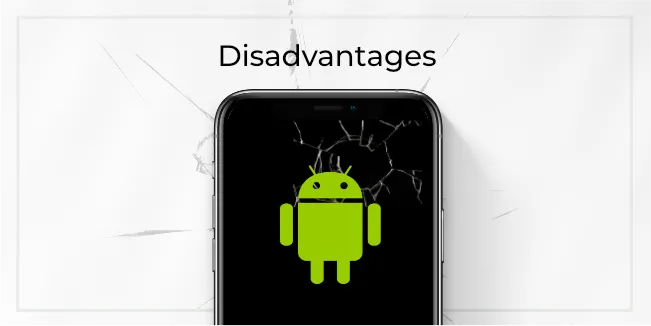
Fragmentation
Android devices come in all shapes and sizes from a variety of manufacturers. This makes it more difficult to test your app on a wide range of devices. Because there are so many different Android devices on the market, it can be difficult to ensure that your app looks and feels consistent across all of them. This is especially true if you’re targeting lower-end devices, which may not have the same level of performance as higher-end ones. Additionally, the cost of testing will be much higher than in the case of iOS apps.
Users are less likely to pay
Android users spend less on apps. Sensor Tower estimates that Apple’s App Store generated as much as $41.5 billion in consumer spending in the first half of 2021 only, while Google Play only generated approximately $23.4 billion in the same period.
How to hit both platforms?
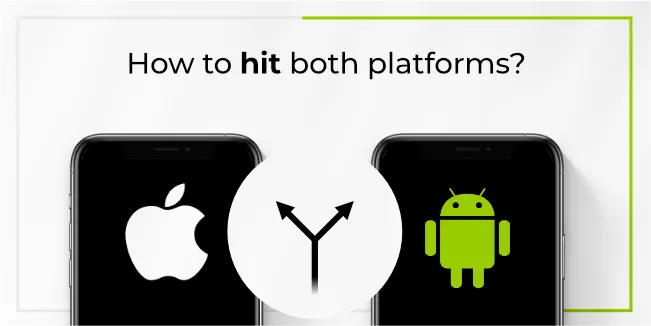
So far, everything you read in this article has been related to native mobile app development, a method where you create one application for each platform using native languages. We have already written about these languages : Kotlin / Java for Android and Objective-C / Swift for iOS.
Now let’s talk about cross-platform development, which could be the best option if you want to simultaneously hit both Android and iOS platforms.
Cross-platform development for the rescue!
With cross-platform development, you can create a single application that will work on both platforms. The most popular framework for Android and iOS app development is React Native.
With React Native, you can reuse up to 90% of the code between platforms, significantly saving time and money.
Other cross-platform programming languages are, for example, Ionic or Flutter.
The whole goal of cross-platform development is to minimize the time and money needed to develop applications that are to hit both Android and iOS platforms. It’s possible because there is no Android or iOS developers division in cross-platform development. One team is responsible for creating both applications based on one source code.
Of course, you can also use a native approach and create two separate applications for each platform. But why would you do that if you can have one app that works on both?
Ultimately, it all comes down to your preferences and the specific needs of your project. If you want to save time and money, cross-platform development is the way to go. But if you need absolute perfection and are willing to invest more resources, native development is the right choice.
Conclusion
As you can see, it is not so easy to just pick the better platform in the eternal Android vs. iOS battle. The answer to the question from the title depends on your project’s specific circumstances.
Both Android and iOS have their own strengths and weaknesses. By considering your project’s goals, target audience, budget, and timeline, you can make an informed decision and choose the right platform for your business.
If you still can’t decide which platform is better for your project or simply don’t have the resources to develop two separate native apps, consider cross-platform development.
